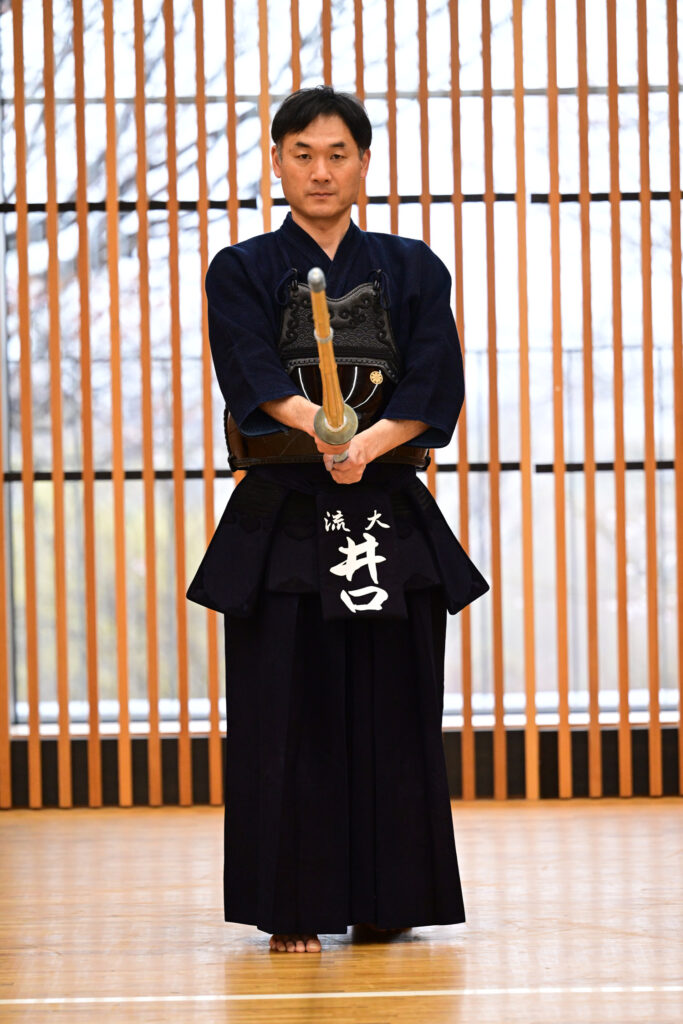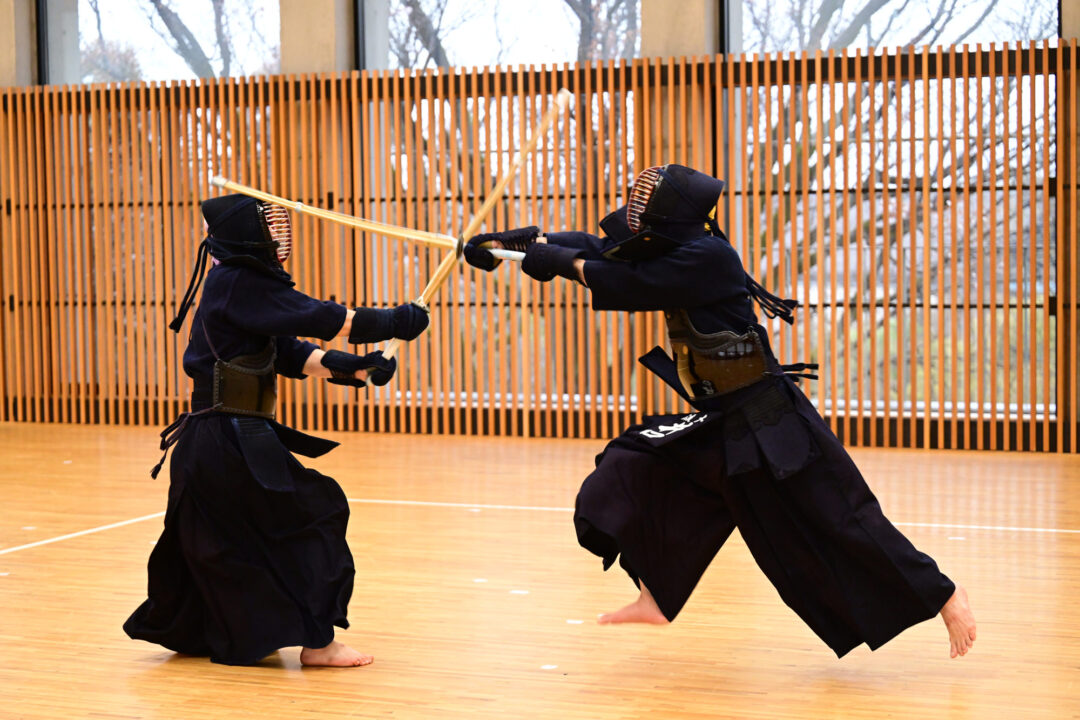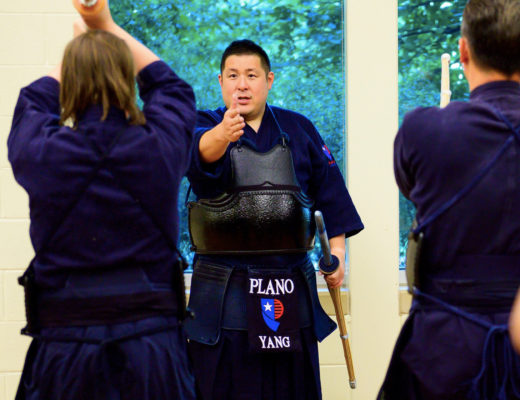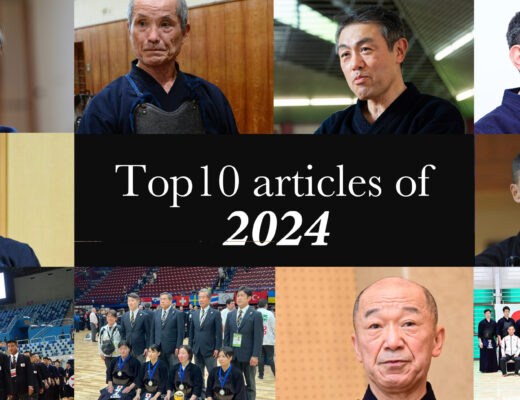2023.6 KENDOJIDAI
Iguchi Kiyoshi, who has achieved success at the highest level, including winning the team title at the World Kendo Championship and winning the individual title at the National Police Kendo Championship, has now embarked on the path of an instructor after joining his alma mater, Ryutsu Keizai University, as a faculty member last year. Iguchi shares his insights on the importance of developing strong footwork in Kendo.
Photography: Nishiguchi Kunihiko
Translation: Jouke van der Woude
Iguchi Kiyoshi, Kyoshi 8th Dan

Starting from the academic year 2022, I became a faculty member at my alma mater, Ryutsu Keizai University, and also took on the role of the Kendo club head coach, instructing club members. Over this past year, I have been wholeheartedly working hard with the students, and I have once again realized the importance of footwork, which is the theme of this discussion.
Kendo involves assuming a Kamae with the right hand and right foot in front and primarily moving with Okuri-ashi (the most basic footwork in Kendo). These movements are entirely different from everyday life, making it the most challenging aspect to teach Kendo in general physical education classes. However, when you master this footwork, your Kendo movements transform remarkably, and the actions of swinging the Shinai and moving your feet become synchronized.
I began practicing Kendo over 40 years ago. In the dojo where I received Kendo instruction, we relentlessly practiced footwork.
In Kendo, the ability to respond instantaneously with a technique when an opportunity for a strike arises is crucial. In reality, a valid strike is often not possible if your body doesn’t react when you perceive the opportunity for a strike. The foundation for this is precise footwork. You are required to respond instantly with your left foot as your pivot foot.
Opportunities for strikes don’t arise unless you maintain the appropriate Maai (read: Ma-ai. Distance to your opponent) between you and your opponent. Therefore, creating what is known as Uchima, or the striking distance, is essential. Kendo’s engagements begin from a far distance (To-ma), and as you close in from touching blades (Shokujin no Ma-ai) to crossing blades (Koujin no Ma-ai) to Uchima, finding opportunities for strikes becomes challenging. Without functional footwork, it’s impossible to maintain the appropriate Maai. I have come to realize that footwork must be worked on throughout one’s lifetime.
When I underwent the 8th Dan examination, I studied and devised ways to close Maai effectively. The textbook description of the Issoku Itto no Maai (Maai of one step and one sword) suggests that you can land a strike when you step forward and that you can avoid your opponent’s strike by stepping back. This is considered the fundamental Maai in Kendo. In a real fight, your opponent often evades your strikes by stepping back, so I contemplated how to close in even further. Making a mistake in closing the Maai can also give your opponent an opportunity to strike. Along with closing the Maai like this, I also considered gaining a psychological advantage. Therefore, I constantly instruct the club members from basic Keiko to be aware of how to close the Maai in a way that is effective for real fights.
When you become aware of closing the Maai in Keiko on techniques, the process of executing techniques becomes more precise. You’ll be able to imagine when and where to execute a technique that can lead to a successful Ippon.
Body-memorize the Maai for striking without repositioning the left foot
As mentioned earlier, the Issoku Itto no Maai is the distance at which you can strike with a single step forward. In our training at Ryutsu Keizai University, after practicing a large Men-strike with Okuri-ashi, we repeatedly practice striking Men from Issoku Itto without repositioning the left foot.
In real fights, it’s not easy to get within Issoku Itto no Maai, but the first step is to physically learn how far you need to go in before being able to strike. This Maai changes whether you are performing a large Men-strike or striking quickly and sharply which is more suited to real fights.
In Kendo, there are four types of footwork: Ayumi-ashi (normal walking), Okuri-ashi (basic Kendo footwork), Tsugi-ashi (repositioning the left foot), and Hiraki-ashi (side-step). When entering Issoku Itto no Maai, Tsugi-ashi is effective. However, if you use it too often you may end up advancing the left foot unnecessarily in situations where it’s not required. This can lead to dire situations where you advance your left foot, giving your opponent an opportunity for a strike.
During a strike, if you try to force your strike to reach the target, your upper body tends to lean forward significantly. This results in a striking method that relies on merely touching the target, so it’s important to learn the accurate Maai for waist-driven strikes.
As you age and your leg strength diminishes, the distance you can reach becomes shorter, so understanding and adjusting the Maai becomes crucial to compensate for the decrease in leg strength.
Don’t strike with momentum. Close in meticulously and enter your Uchima
The rest of this article is only available for Kendo Jidai International subscribers!





